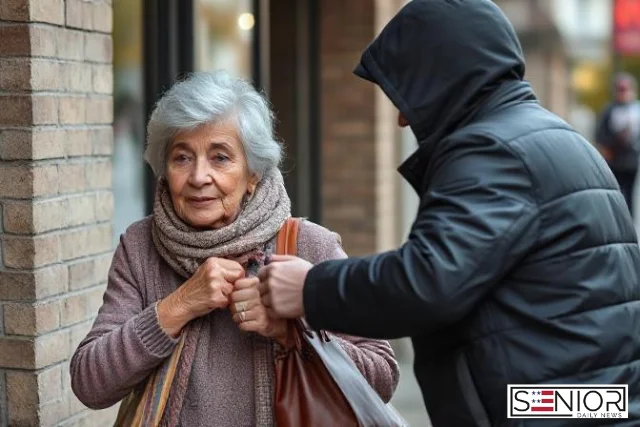Senior Safety First: Best Self-Defense Techniques for Older Adults

Staying safe becomes increasingly important as we age, and while most of us hope to never face a dangerous situation, being prepared can make all the difference. For older adults, self-defense doesn’t mean high kicks or intense martial arts training—it means learning practical, simple, and effective strategies to protect yourself. Senior safety should focus on awareness, prevention, and easy-to-learn techniques that match your comfort level and physical ability. This guide will explore the best self-defense techniques for seniors, emphasizing strategies that promote confidence, independence, and peace of mind.
Why Senior Safety Matters
Statistics show that older adults are often targeted by criminals because they may appear less able to defend themselves. Common risks include purse snatching, scams that escalate into physical confrontations, or home invasions. That’s why senior safety isn’t just about physical defense—it’s also about recognizing threats early and having a plan to stay safe.
Learning self-defense provides three major benefits for older adults:
- Confidence – Feeling secure reduces fear of going out alone.
- Preparedness – Seniors know what to do if confronted by a threat.
- Independence – Being able to protect oneself contributes to living freely and actively.
Prevention is the First Line of Defense
The best way to stay safe is to avoid danger altogether. Prevention-based senior safety habits include:
- Awareness of surroundings: Stay alert in parking lots, stairwells, and poorly lit areas.
- Body language: Walking with confidence can deter attackers.
- Travel with others: When possible, walk with a companion.
- Trust instincts: If something feels unsafe, it probably is.
- Limit distractions: Avoid being absorbed in your phone while outside.
These small adjustments can reduce the likelihood of being targeted.
Simple and Effective Self-Defense Moves for Seniors
Self-defense for older adults should be practical and safe to execute without requiring extreme strength or flexibility. Here are a few recommended techniques:
1. Using Your Voice
One of the most powerful tools is your voice. Yelling firmly—“Stop!” or “Back off!”—draws attention and can scare off attackers. Loud commands show confidence and may attract help.
2. Palm Strike
If someone gets too close, a simple palm strike to the attacker’s chin or nose can create enough space to escape. Unlike a fist punch, it’s safer for older adults because it reduces the risk of injuring the hand.
3. Foot Stomp
If grabbed, stomping hard on the attacker’s foot with your heel can cause pain and loosen their grip. This move is simple, quick, and doesn’t require a lot of strength.
4. Elbow Jab
The elbow is one of the strongest parts of the body. If grabbed from behind, a sharp backward elbow jab to the midsection can surprise the attacker and provide an opportunity to escape.
5. Escaping Grabs
If someone grabs your wrist, turn your wrist toward the attacker’s thumb and pull away. This is one of the weakest points in a grip, making it easier to break free.
6. Cane as a Defense Tool
For seniors who use a cane, it can serve as a powerful self-defense tool. A cane can block, strike, or create distance between you and an aggressor. Specialized cane self-defense classes are available across the U.S.
Self-Defense Tools for Senior Safety
Sometimes, having an extra layer of protection helps seniors feel more secure. Popular non-lethal tools include:
- Personal alarms: Small devices that emit loud sounds when triggered.
- Pepper spray: Legal in most states, it can temporarily disable an attacker.
- Flashlights: Tactical flashlights can disorient attackers while lighting your path.
Before carrying any tool, seniors should check state laws and practice using them safely.
Taking a Self-Defense Class for Seniors
Across the United States, many community centers, YMCAs, and martial arts studios offer senior-friendly self-defense classes. Programs like Krav Maga, Aikido, or Tai Chi-based defense classes often adapt moves for mobility and strength levels. Beyond learning physical techniques, these classes emphasize situational awareness and confidence building.
Home and Online Safety
Senior safety also extends beyond the street. At home and online, older adults should remain vigilant.
- At home: Keep doors and windows locked, use peepholes before answering, and avoid opening the door to strangers.
- Online: Avoid sharing personal information, and be cautious of scams designed to manipulate seniors into giving away sensitive data.
Building Confidence and Staying Active
Physical fitness supports senior safety by improving balance, strength, and mobility. Activities like yoga, Tai Chi, and light strength training not only enhance health but also provide better control in self-defense situations. Confidence also grows when seniors feel strong and capable in their bodies.
The Role of Community in Senior Safety
Safety isn’t just an individual concern—it’s a community effort. Seniors can join neighborhood watch programs, attend community safety workshops, or participate in group activities that keep them socially connected and less isolated. Staying engaged helps reduce vulnerability and increases overall well-being.
Frequently Asked Questions (FAQs)
1. Do I need to be physically strong to defend myself?
No. Senior safety techniques focus on simple moves that rely on leverage, surprise, and awareness rather than brute strength.
2. Are self-defense classes available specifically for seniors?
Yes. Many community centers and organizations offer senior-friendly classes tailored to different mobility levels.
3. Is carrying pepper spray legal everywhere?
Pepper spray is legal in most U.S. states, but some have restrictions. It’s best to check your local laws before carrying it.
4. What if I can’t move quickly due to mobility issues?
That’s okay. Tools like a cane, personal alarms, or even your voice are highly effective. Classes can also adapt techniques for seated or slower movements.
5. How can I stay safe at home?
Use locks, motion lights, and avoid letting strangers inside. Consider a home security system or video doorbell for added peace of mind.
6. Is self-defense really necessary for seniors living in safe areas?
Even in safe neighborhoods, unexpected situations can arise. Self-defense provides confidence and peace of mind, even if you never have to use it.
Image Source: Canva






